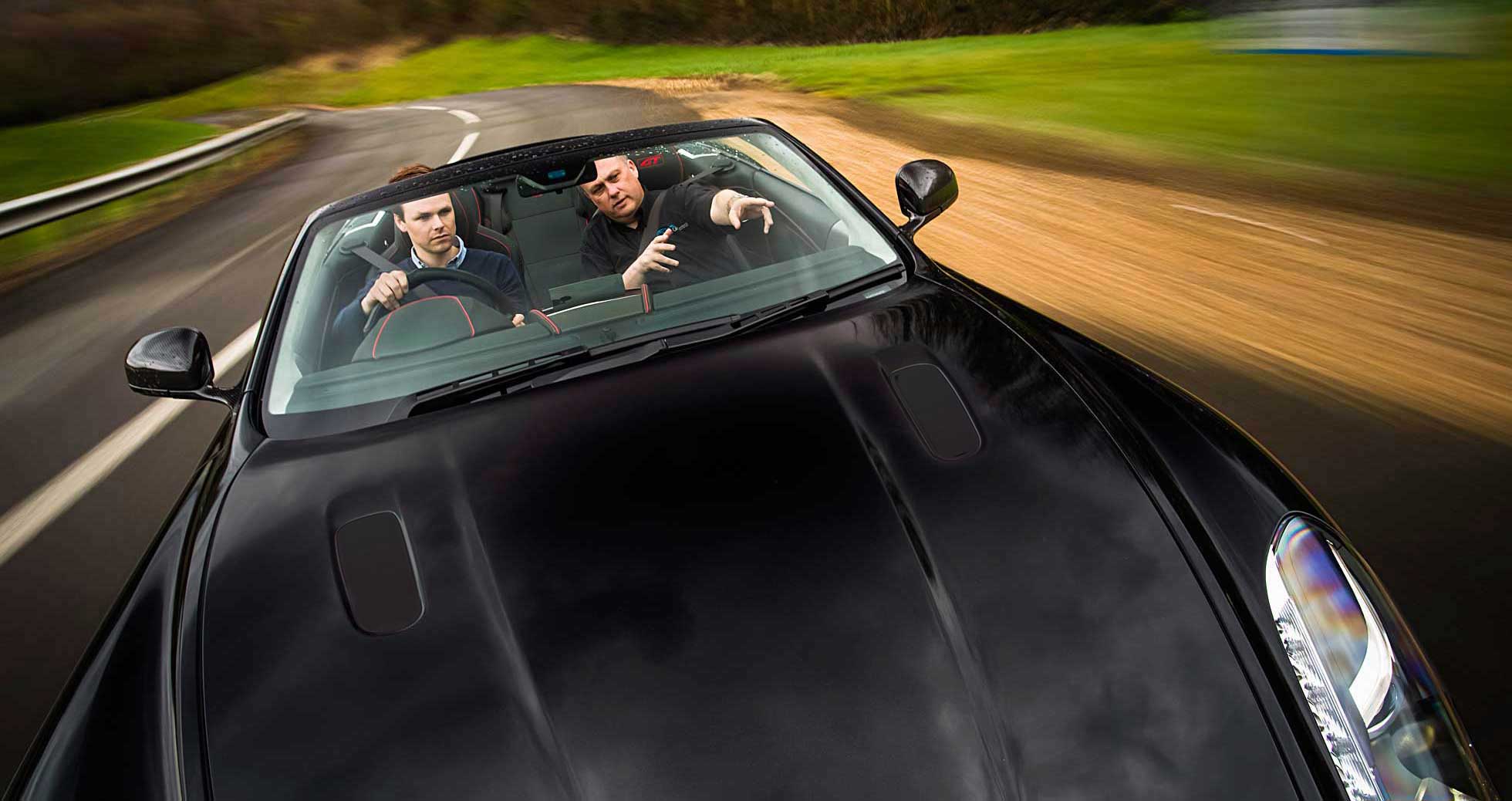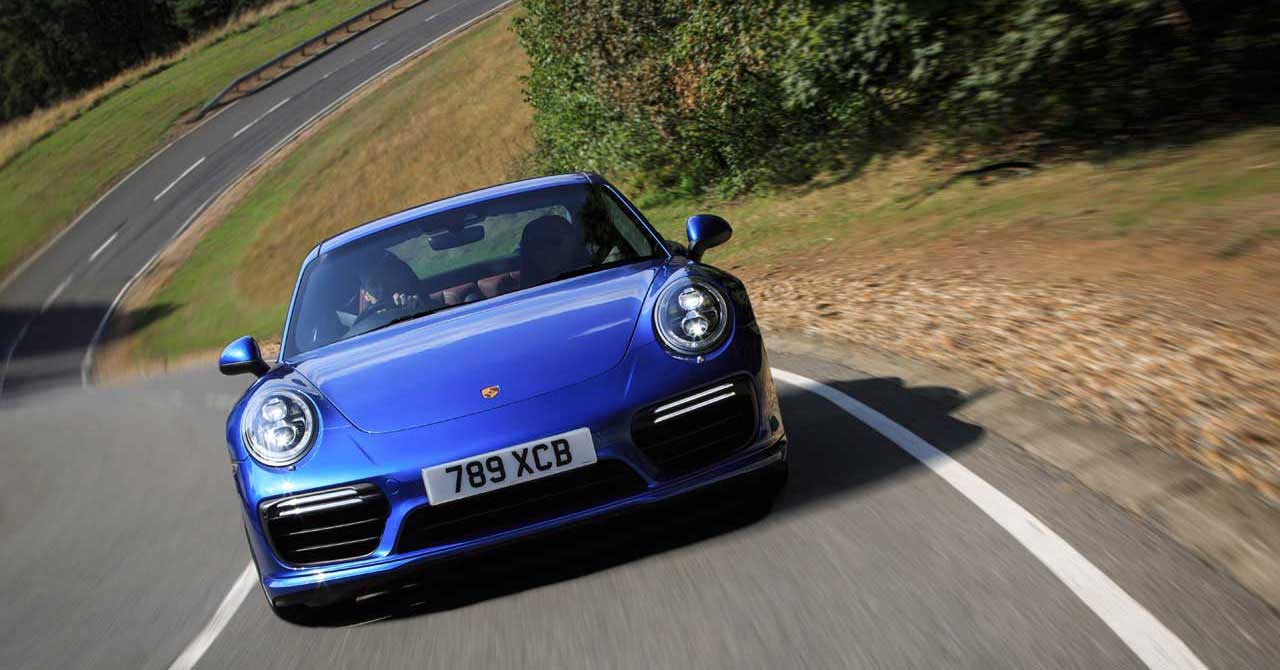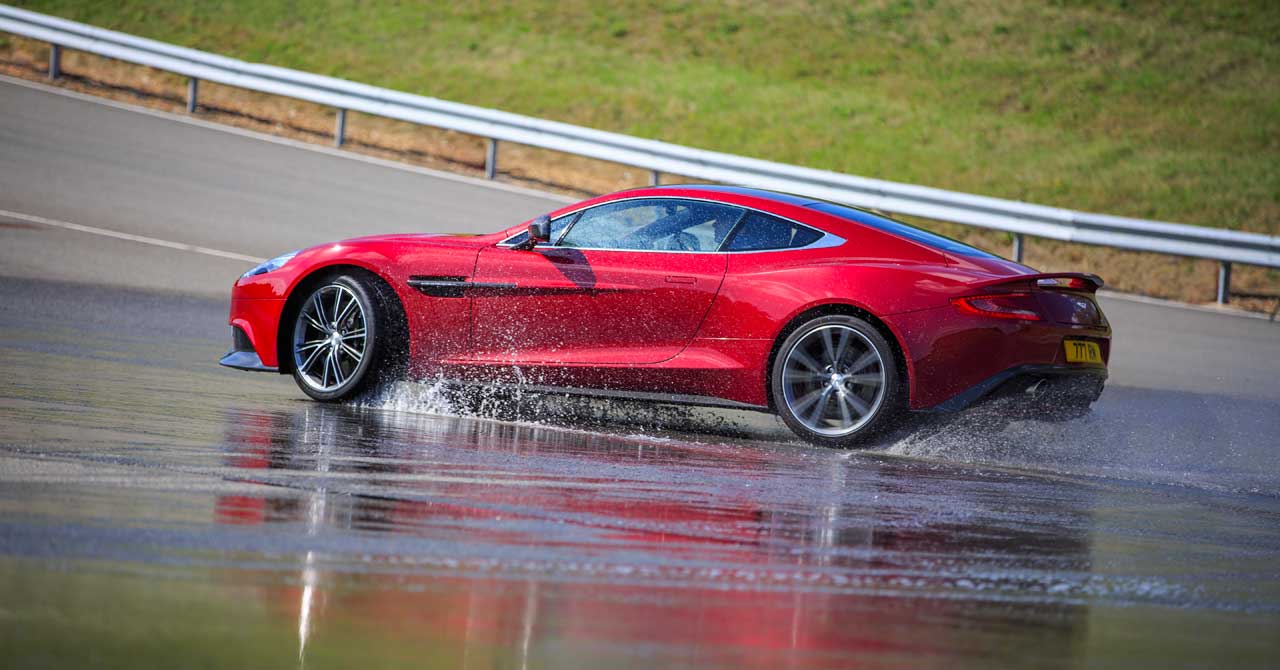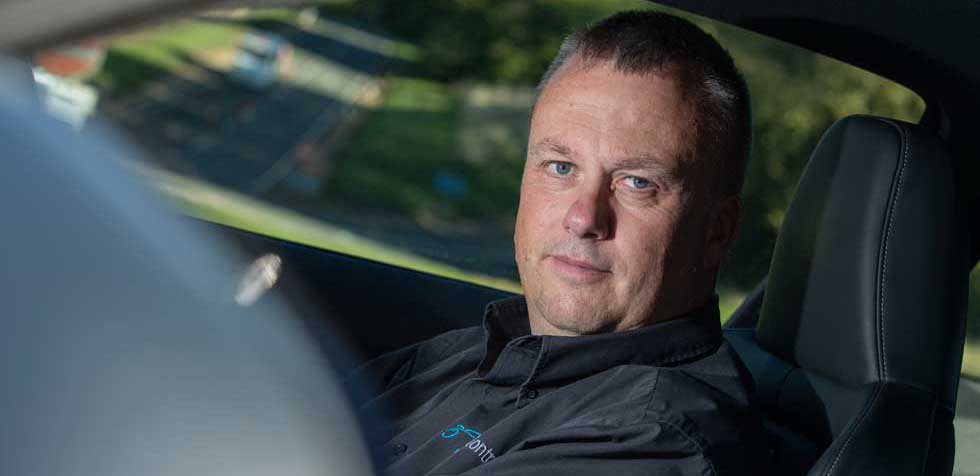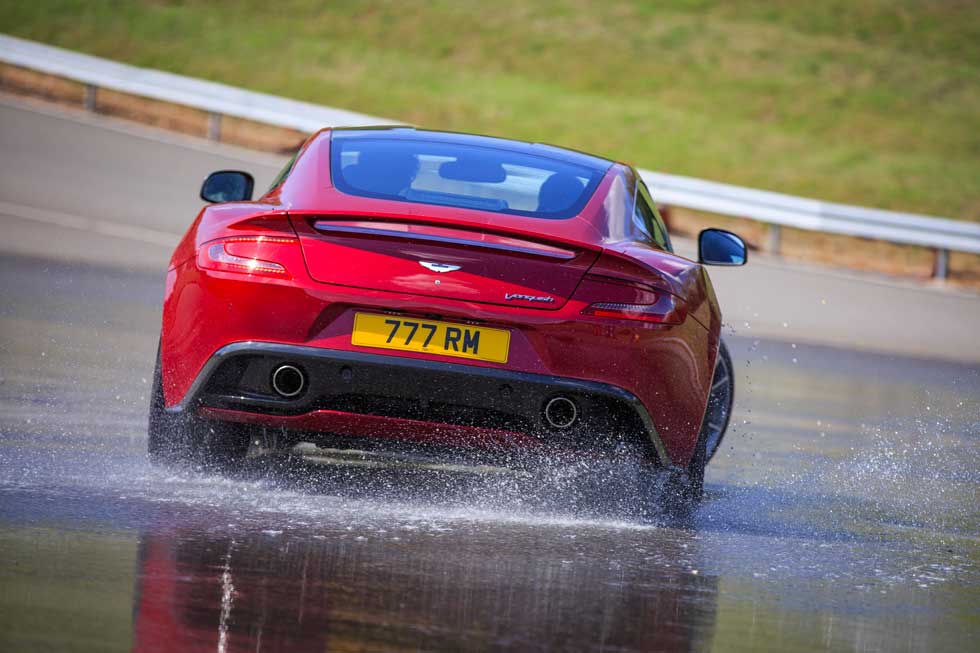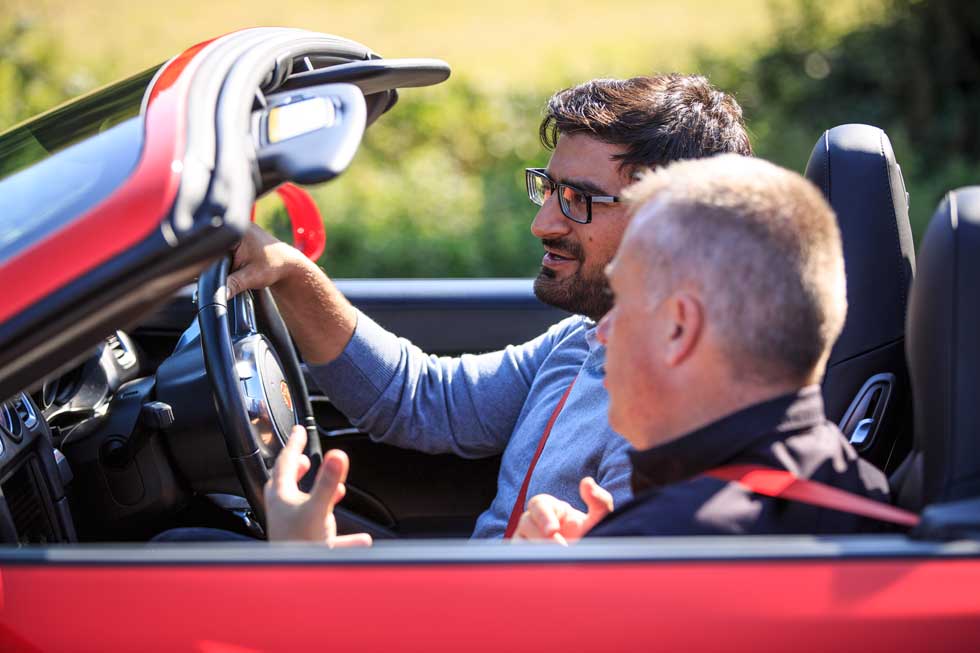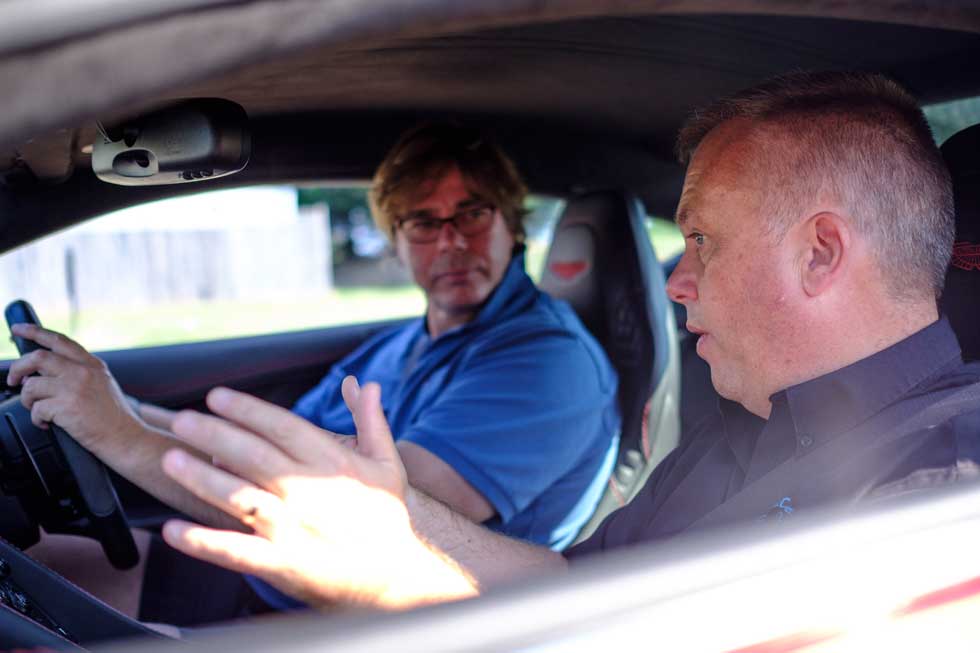Picture this: You’re behind the wheel of your sports car, the engine burbling with anticipation, the open road ahead of you. You approach a corner, a challenge waiting to be conquered.
This is where trail braking often comes into play, a technique whispered amongst the circles of highly advanced drivers. But what is it, and why does it hold such a revered place in the world of performance driving?
Trail braking, in essence, is a dance with your vehicle. It’s the art of quickly and precisely rotating a car into a significant corner from a swift approach, achieved by loading the front tyres for enhanced grip through braking into the turn.
It may sound straightforward, yet it’s a skill that demands a profound understanding of your vehicle’s dynamics, a sharp sense of timing, and finessed, deliberate control of the brake pedal.
This technique is not just about slowing down; it’s about harnessing the physics acting on your vehicle to enhance control, balance, and ultimately, safe performance.
It’s about transforming each corner from a mere bend in the road into an opportunity for mastery and exhilaration. So, buckle up as we delve into the art and science of trail braking.
The Science Behind Trail Braking
Understanding the science behind trail braking is crucial to mastering this advanced driving technique. It all boils down to two key concepts: vehicle dynamics and weight transfer.
Understanding Vehicle Dynamics
When you’re driving, your vehicle is constantly subject to various forces – acceleration, deceleration, and lateral forces during cornering. These forces affect how your vehicle behaves, especially when you’re making swift progress.
When you apply the brakes, the weight of your vehicle shifts forward. This weight transfer increases the load on the front tyres, enhancing their grip and allowing them to handle more steering input. Conversely, the rear tyres, now carrying less weight, have reduced grip. This shift in weight distribution is a fundamental aspect of trail braking as it assists steering.
Think of it like a see-saw in a playground. When one end goes down (the front of your car during braking), the other end goes up (the rear of your car). This shift can dramatically affect your car’s balance and grip, especially when cornering swiftly in your sports car on a country road in the UK.
Balance and Control
Trail braking is all about positive weight transfer, also known as dynamic axle shift, to enhance control. By modulating your brake pressure as you enter a corner, you can adjust the weight distribution between the front and rear tyres. Tipping the balance toward the front tyres allows for smoother, more precise cornering from a swift approach, reduces the risk of losing grip, and enables you to maintain higher corner entry and exit speeds within safe parameters.
The key point to remember is that trail braking is not just about slowing down. It’s about using the brakes to adjust the balance and controlling your vehicle’s weight transfer and rotation. By managing the load on your tyres, you can influence your vehicle’s steering response and stability. This level of control is what separates an average driver from a truly skilled one.
There are different levels of trail braking, applicable to track use only, and for road use. Whilst optimum pace is key on track, total control and safety is of course paramount for public roads. The difference is that where a track driver may look to use 100% of the tyre’s grip when cornering, a skilled road driver generally keeps at least 25% of the tyre’s grip spare, held in reserve in case needed to deal with changing situations.
How to Trail Brake
Now that we’ve covered the science behind trail braking, let’s dive into the practical side of things. Here’s a step-by-step guide on how to trail brake on the road.
Step-by-Step Guide
- Approach the Corner: As you approach the corner, start applying progressively firm brake pressure while your vehicle is still in a straight line. This is known as straight-line braking. The primary goal here is to load the front tyres, pushing down on them for greater traction ready for steering; also reducing your speed to a safe level before you start turning. Leave plenty of grip spare when you start to practice this, ready to also be able to steer without exceeding grip limits.
- Begin Turning: You can now use some of the grip you have left spare to begin turning smoothly into the corner whilst maintaining brake pressure. As you approach the apex (or reach a point whereby the car has rotated enough and/or slowed enough for an easy and accurate corner exit), gradually ease off the brake. This is where the “trail” in trail braking comes into play. You’re essentially trailing off the brake pressure as you enter the corner.
- Modulate Brake Pressure: The key to trail braking is modulating your brake pressure throughout the corner entry. You want to maintain enough pressure to keep the front tyres loaded for optimal grip, but not so much that you cause either the front or rear tyres to lose traction.
- Release the Brake: By the time you’ve hit the apex of the corner (the innermost point of your path), you should be off the brakes completely; having released them smoothly to avoid the front suspension unloading suddenly. From here, you can start to smoothly apply the throttle as you exit the corner.
The Art of Pressure
Trail braking is as much an art as it is a science. It’s not about stomping on the brake pedal or anything else dramatic. It’s about applying and releasing brake pressure smoothly and progressively. Imagine you’re squeezing a ripe tomato. You want to apply enough pressure to control it, but not so much that you crush it. That’s the kind of finesse you need when modulating brake pressure during trail braking.
Mastering the Technique
Like any advanced driving technique, trail braking requires disciplined practice. Start by trying it out at a safe location like a track day. As you get more comfortable with the technique, you can start to experiment with different levels of brake pressure and different types of corners. Remember, the goal is not just to go faster, but to gain more control over your vehicle and become a smoother, more skilled driver.
Performance Driver Training Courses
Why Trail Braking Matters
You might be wondering, “Why go through all the trouble of learning trail braking? What’s in it for me?” The answer is simple: control. With control comes the option for greater speeds, when desired, though that is a side effect rather than the be-all and end-all when driving sports cars on the road.
An Ace Up Your Sleeve
As a sports car driver, chances are you have, at some point, found yourself entering a corner too quickly, either because you simply misread the road, or because of a changing scenario.
This is one example where the ability to instinctively trail brake matters. Braking into such a corner not only slows you down but increases your car’s rotation as you steer, rather than the excessive momentum potentially causing the car to understeer off the road.
Confident Control
Many sports car drivers suffer a crisis of confidence at times when the power of their vehicle leads them into situations which take them far outside their comfort zone: frequently when approaching or negotiating corners.
Traditional advice was to always brake in a straight line only. You may well have heard the well-meaning yet misguided advice to never brake in a bend. To be fair, braking and steering at the same time can go wrong: it does mean sharing your tyres’ grip between two opposing forces, after all. This is particularly relevant to cars of yesteryear, with skinny, primitive tyres and no electronic driver safety aids, such as ABS or ESC. And yet trail braking has always worked, in most cars, when applied skilfully.
The ability to accurately brake into a significant bend from a swift approach (whether that pace is deliberate or in error), gives well-founded confidence to sporty drivers.
Deeper Braking
Trail braking also allows for deeper braking into corners. In traditional braking, you have to finish all your braking before you start turning. But with trail braking, you continue braking as you start your turn, effectively delaying your braking zone. This means you can safely maintain a higher speed for longer before you have to start slowing down.
In essence, trail braking allows you to make your braking later and your acceleration earlier, optimising your controlled pace through the corner and onto the next straight.
When to Trail Brake
Trail braking is a versatile technique that can be adapted to a wide range of scenarios. However, it is by no means relevant to all corners, or in all situations, so it’s important to understand when and where it’s most effective.
Ideal Scenarios
Trail braking is useful when swiftly approaching significant corners, to give your front tyres more grip and make your car rotate faster, eliminating likely understeer.
It’s also beneficial in situations where you need to tighten your line mid-corner. By modulating your brake pressure, you can subtly shift your vehicle’s weight and alter its path, giving you more control over your cornering line.
Remember, trail braking is not a one-size-fits-all technique. It requires adaptation to the specific corner and conditions at hand. As you gain experience, you’ll develop a feel for how much brake pressure to apply and when to release the brakes to best suit the handling characteristics of your car and tyres.
Threshold Braking vs. Trail Braking
In the world of performance driving, you’ll often hear about two key braking techniques: threshold braking and trail braking. While they both involve the artful application of brake pressure, they serve different purposes and are used in different scenarios.
Understanding Threshold Braking
Threshold braking is the technique of applying brake pressure up to the point just before the tyres lose traction and begin to skid. The “threshold” here refers to the limit of tyre adhesion. The goal of threshold braking is to achieve the shortest possible braking distance, making it particularly useful in track driving or racing situations.
It is most relevant in cars without ABS, where exceeding threshold braking (i.e. braking too hard) typically locks one or both front tyres (or even all 4 tyres), resulting in the car skidding straight on without the ability to steer. Road cars without ABS are relatively few and far between these days, making threshold braking much less crucial than it once was, but if you drive a classic or otherwise raw sports car without ABS, threshold braking is a key skill to master.
Comparing the Techniques
While both techniques require skilful brake modulation, they differ in their application and purpose:
- Threshold Braking: This technique is all about maximum deceleration without skidding or activating ABS, thereby maintaining total control. It’s used when you need to slow down as quickly as possible, such as when a hazard develops in your path. The challenge here is to apply just enough brake pressure to reach the edge of the tyre grip without crossing it.
- Trail Braking: Trail braking, on the other hand, is about dynamic axle shift and control during swift cornering. Instead of aiming for maximum deceleration, you’re using the brakes to manage weight transfer and facilitate quick and precise cornering. . The goal is not just to slow down, but to slow down in a way that enhances your cornering performance.
In essence, threshold braking is about slowing, while trail braking is about cornering. Both are very useful skills in performance driving and understanding when and how to use each technique can make you a faster and safer driver.
Stages of Trail Braking
Trail braking is not a single action, but a sequence of actions that take place from the moment you start braking to the moment you exit the corner. Understanding these stages and how to transition smoothly between them is key to mastering this technique.
The Journey Through a Corner
- Initial Braking: This stage begins as you approach the corner and start applying brake pressure. Your goal here is to transfer weight forward over the front wheels, pushing the tyres onto the ground for enhanced grip and lightening the rear of the vehicle, placing the car “up on its toes”, ready to turn quickly; plus reduce speed sufficiently while the vehicle is still in a straight line.
- Turn-In: maintain sufficient braking force to assist accurate turn-in as you smoothly yet deliberately begin to turn the steering wheel. This is the start of the trail-braking phase. Your goal here is to maintain enough brake pressure to keep the front tyres loaded for optimal grip and to assist rotation into the corner.
- Corner Entry: As you continue to turn into the corner, progressively and smoothly release the brake, trailing off the pressure as you approach the apex. Your goal here is to balance the vehicle’s weight distribution and maintain control; keeping the front suspension loaded.
- Apex: At the apex, the innermost point of your path, you should be off the brakes completely. Your goal here is to begin transitioning from braking to acceleration as you smoothly release steering input for the corner exit.
- Corner Exit: As you exit the corner, progressively apply the throttle, accelerating out of the turn. Your goal here is to smoothly transition from deceleration to acceleration, maintaining grip and control as you increase speed.
Smooth Transitions
The key to effective trail braking is smooth transitions. Abrupt changes in brake pressure can upset the vehicle’s balance and cause a loss of grip. Think of it like smoothly shifting gears in your sports car while cruising through the beautiful countryside roads of the UK. You want to ensure each transition is seamless to maintain the rhythm of your drive. That’s the kind of smoothness you should aim for when modulating your brake pressure during trail braking.
Remember, trail braking is a dynamic process that requires constant adjustments based on your speed, the corner’s characteristics, and your vehicle’s response. With thoughtful and accurate practice, you’ll develop a feel for these transitions and be able to execute them seamlessly.
The Benefits of Trail Braking
For the UK sports car enthusiast, trail braking is more than just an advanced driving technique. It’s a tool that can transform your spirited drives into a thrilling and immersive experience, offering several key benefits.
Enhanced Control
One of the main benefits of trail braking is greater vehicle control. By managing weight transfer and dictating load on your tyres, you can enhance your vehicle’s stability and responsiveness during cornering. This can give you more confidence and safety behind the wheel, whether you’re navigating your favourite backroads or pushing your sports car’s limits on a track day.
Faster Cornering Speeds
Trail braking can also help you maintain higher cornering speeds. By delaying your braking into the turn, you can safely carry more speed into the corner (as and when appropriate) and get on the throttle earlier. This can lead to more exhilarating drives on your favourite roads. Imagine flowing along Scotland’s famous North Coast 500, taking each corner with precision and panache, your sports car responding instantly to your every input.
Enhanced Driving Enjoyment
Finally, trail braking can make your driving smoother. Smooth driving is not just about comfort; it’s very much about efficient control and safety. By smoothing out your transitions from braking to cornering to acceleration, you strengthen your connection to your sports car, making driving it all the more enjoyable and rewarding.
The Risks of Trail Braking
While trail braking offers numerous benefits, it’s important to be aware of the potential risks associated with this advanced driving technique. Understanding these risks can help you use trail braking safely and effectively.
Potential Pitfalls
One of the main risks of trail braking is overdoing it. Applying too much brake pressure during cornering can cause you to steer too much, effectively cutting the corner. Excessive brake pressure may also lead to your tyres losing grip, resulting in either understeer or oversteer; particularly in cars without ABS or ESC electronic driver safety aids. This can be especially risky when driving on public roads, where hazards can develop at any moment.
It may be a cliche that old habits die hard, but it’s also true. It takes time and determined practice to replace long-ingrained habits with new techniques, even when the benefits of doing so are clearly understood. This is certainly the case when it comes to braking for corners from a swift approach. Be sure to add enough braking pressure, and for long enough into the corner, to achieve the desired result; ever-mindful that releasing the brakes too soon (and/or too quickly) can cause the car to understeer.
Another risk is relying too heavily on trail braking. While it’s a powerful tool for enhancing your cornering performance, it’s not always the best approach.
There are many factors to consider when choosing your braking technique, including your speed, the corner’s characteristics, the road conditions, and your vehicle’s capabilities.
Risk Mitigation
So, how can you mitigate these risks? Here are a few tips:
- Practice: Like any advanced driving technique, trail braking requires practice. Start by trying it out in a safe, controlled environment like at Millbrook Proving Ground or on a track day. As you gain experience, you’ll start to develop a feel for how much brake pressure to apply and when to release the brakes.
- Know Your Vehicle: Understanding your vehicle’s dynamics is crucial. Each vehicle responds differently to trail braking, so take the time to learn how your sports car behaves. This can help you anticipate its reactions and make the necessary adjustments.
- Drive Responsibly: Always remember to drive responsibly. Trail braking is a powerful technique, but it’s never an excuse to drive recklessly. Always respect other road users and be ever mindful that control is about safety for all, as well as personal satisfaction.
Performance Driver Training Courses
Conclusion: Elevating Your Drive with Trail Braking
In the realm of performance driving, trail braking stands as a testament to the intricate dance between driver, machine, and road. It’s a technique that goes beyond mere speed, delving into the heart of control, positive weight transfer, and finesse.
For the UK sports car owner, trail braking can be the key to unlocking a new level of engagement with your vehicle. It’s about enhancing those spirited drives through the countryside, adding a layer of skill and precision that elevates the experience from a simple drive to a symphony of swift, rewarding progress and control.
But the journey to mastering trail braking isn’t a sprint; it’s a marathon. It’s about gradual progress, learning from each corner, each modulation of the brake pedal. It’s about understanding your vehicle’s unique language, its responses to your inputs, and its interaction with the road.
So, as you embark on this journey, remember to be patient with yourself. Embrace the learning process, celebrate your progress, and most importantly, enjoy the drive. Because at the end of the day, that’s what it’s all about – the pure, unadulterated joy of driving.
